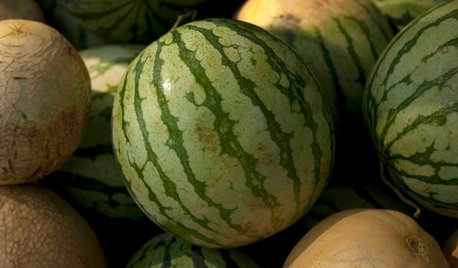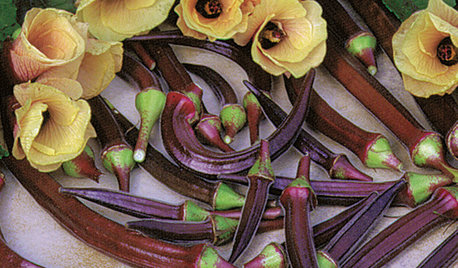Varietal recommendations for cool weather crops
seedmama
13 years ago
Related Stories

GARDENING GUIDESSummer Crops: How to Grow Melons
Drink in the refreshing sweetness of melons from your own garden this summer — they can last well into fall too
Full Story
EDIBLE GARDENSHow to Grow Your Own Sweet Summer Crops
This guide will help any gardener get started on growing the freshest warm-season veggies and berries for summer
Full Story
EDIBLE GARDENSSummer Crops: How to Grow Tomatoes
Plant tomato seedlings in spring for one of the best tastes of summer, fresh from your backyard
Full Story
GARDENING GUIDESOrganic Matters: Thwart Insect Pests With Trap Crops
Add a few sacrificial plants to your garden to lure insects away from the harvest
Full Story
SPRING GARDENINGSummer Crops: How to Grow Strawberries
Pluck your own sweet strawberries right from the garden vine for smoothies, salads or eating then and there
Full Story
GARDENING GUIDESSummer Crops: How to Grow Okra
Go for the gumbo with this quick-growing edible that brings colorful pods and delicate flowers to a summer garden
Full Story
FARM YOUR YARDCool-Season Vegetables: How to Grow Lettuce
Leaf, butterhead, crisphead or romaine — lettuce is best harvested in the cool weather of spring and fall
Full Story
WINTER GARDENINGExtend Your Growing Season With a Cold Frame in the Garden
If the sun's shining, it might be time to sow seeds under glass to transplant or harvest
Full Story
MOST POPULARHow to Start a Cool-Season Vegetable Garden
Late summer and late winter are good times to plan and plant cool-season crops like salad greens, spinach, beets, carrots and peas
Full Story
GARDENING GUIDES11 Favorite Edibles for Your Cool-Season Garden
Plant crunchy carrots, crisp radishes, tender peas and other vegetables for fall and spring harvests
Full Story


Macmex
seedmamaOriginal Author
Related Discussions
when can cool weather vegetables be grown?
Q
will this cool weather set back my tomato transplants?
Q
too late to plant cool weather veggies?
Q
will cool weather vegetables actually grow in Florida?
Q
scarlettfourseasonsrv
Okiedawn OK Zone 7
mulberryknob
seedmamaOriginal Author
soonergrandmom
Okiedawn OK Zone 7
soonergrandmom
Okiedawn OK Zone 7
Macmex
seedmamaOriginal Author
carsons_mimi
mulberryknob
helenh
carsons_mimi
seedmamaOriginal Author
carsons_mimi
chefgumby
soonergrandmom
carsons_mimi
chefgumby
seedmamaOriginal Author
helenh
biradarcm
soonergrandmom
seedmamaOriginal Author
helenh
biradarcm
soonergrandmom
Okiedawn OK Zone 7
biradarcm
helenh
soonergrandmom
ezzirah011
Okiedawn OK Zone 7
seedmamaOriginal Author
mulberryknob
seedmamaOriginal Author
redding
Okiedawn OK Zone 7
seedmamaOriginal Author
soonergrandmom
susanlynne48
Okiedawn OK Zone 7
slowpoke_gardener